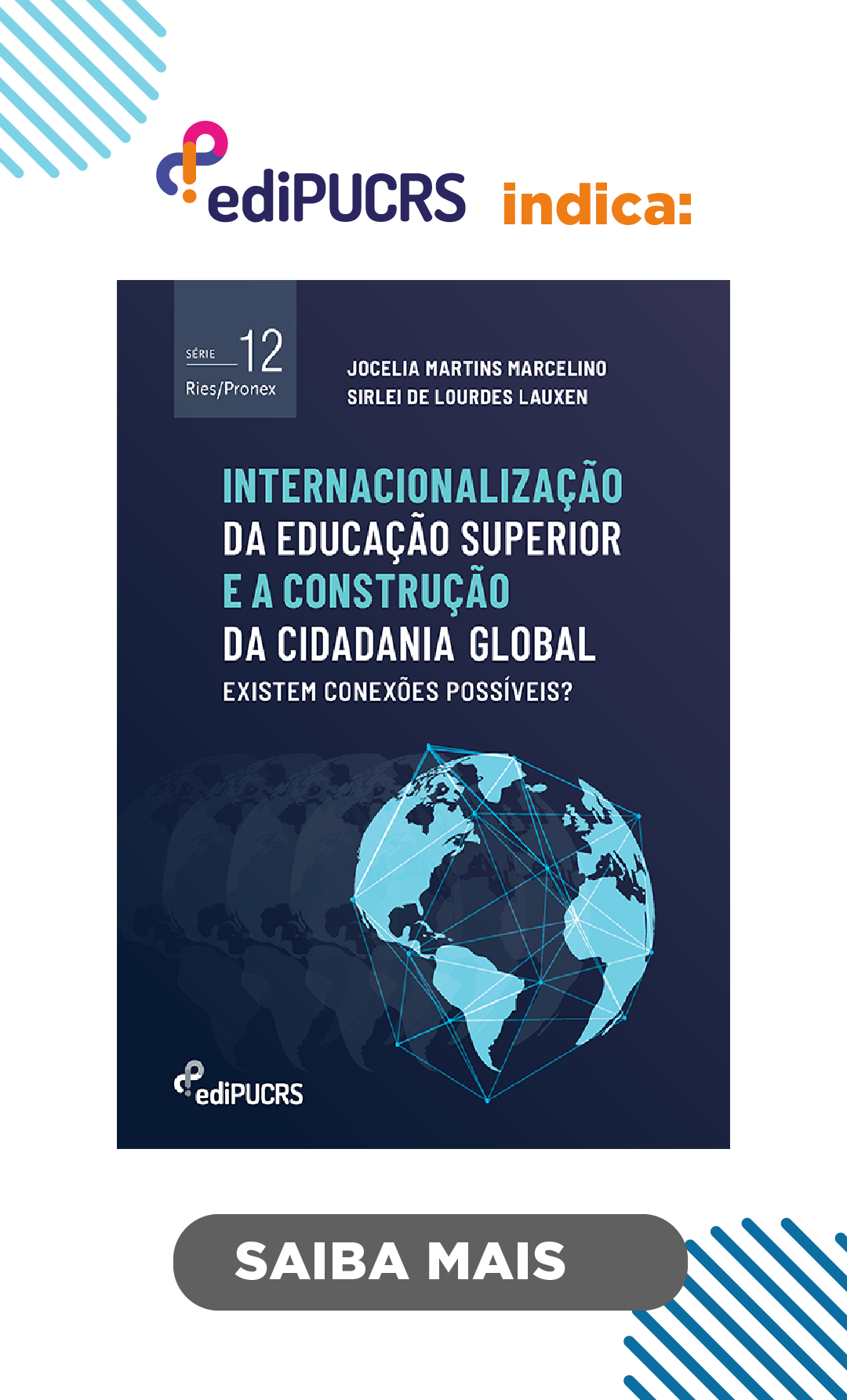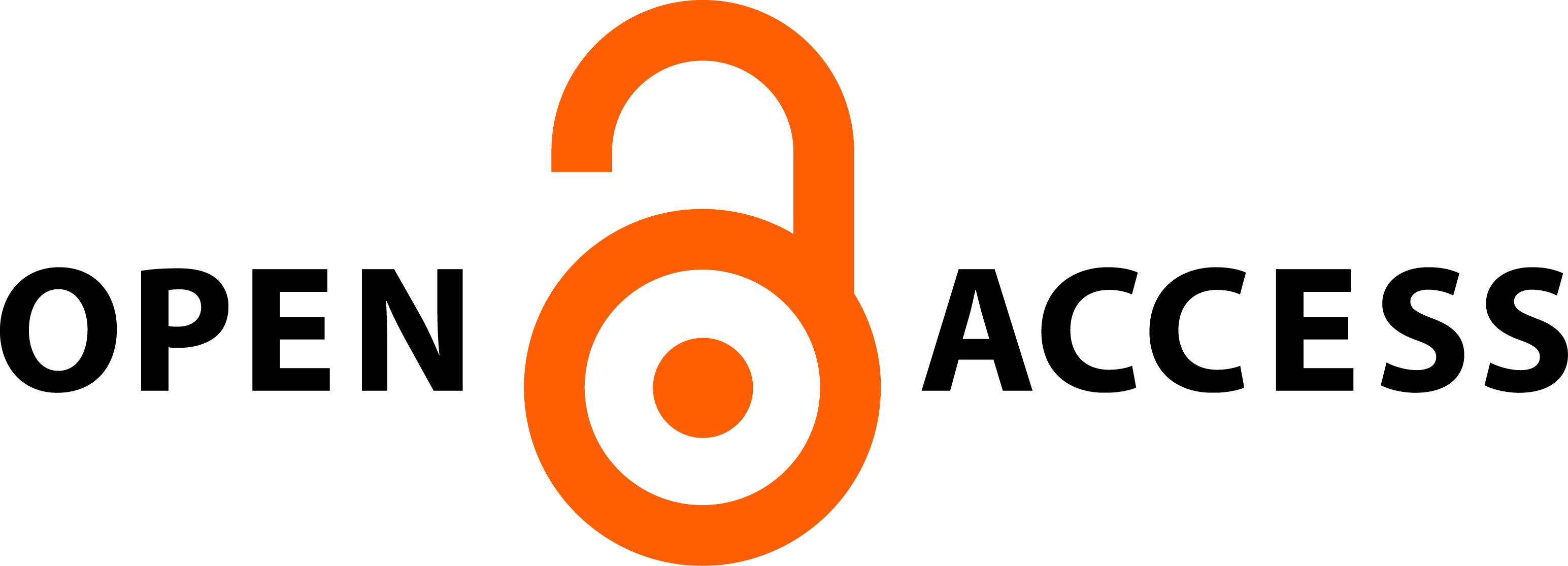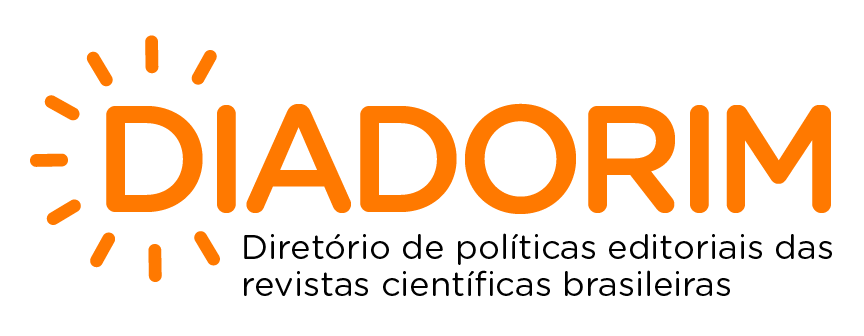Vygotsky’s Defectology: A Misleading Term for a Great Conception
DOI:
https://doi.org/10.15448/1981-2582.2018.3.31725Palavras-chave:
Psychology, Education, Vygotsky, Defectology.Resumo
Although defectology is a misleading term (suggesting the opposite of its meaning) it is a great conception offering solutions to a lot of problems tied to inclusion as a demand of modern society. Therefor I will 1) disclose the theoretical roots of the conception, 2) trace its historical development in order to show how it was misunderstood, 3) apply the conception to inclusion and 4) demonstrate some practical examples showing that the conception is also important for educational practice – among other things by helping to close the gap between theory and practice.
*** Defectologia de Vygotsky: um termo equivocado para uma grande concepção ***
Embora defectologia seja um termo equivocado (sugerindo o contrário do seu significado), é uma grande concepção que oferece soluções para muitos problemas ligados à inclusão como uma demanda da sociedade moderna. Por isso vou 1) revelar as raízes teóricas da concepção, 2) traçar o seu desenvolvimento histórico, a fim de mostrar como foi mal interpretado, 3) aplicar a concepção à inclusão e 4) demonstrar alguns exemplos práticos que mostram que a concepção também é importante para prática educacional – entre outras coisas, ajudando a fechar a lacuna entre teoria e prática.
Palavras-chave: Psicologia; Educação; Vygotsky; Defectologia.
Downloads
Referências
AEBLI, Hans. Denken: das Ordnen des Tuns. Band II. Stuttgart: Klett, 1981.
______. Zwölf Grundformen des Lehrens. Stuttgart: Klett, 1983.
BRUNER, Jerome S. The Process of Education. Cambridge, London: Harvard University Press, 1960.
______; OLVER, Rose R.; GREENFIELD, Patricia M. (Eds.). Studies in Cognitive Growth. Hoboken, New Jersey: John Wiley and Sons, 1967.
DAVYDOV, Vasilij V. Problems of developmental teaching. Soviet Education, 30, 8, 15-97; 9, 3-83; 10, 3-77, 1988.
______. Problems of developmental instruction: A theoretical and experimental psychology study. New York, NY: Nova Science, 2008.
______. What is real learning activity? In: HEDEGAARD, Mariane; LOMPSCHER, Joachim (Eds.). Learning activity and development. Aarhus: Aarhus University Press, 1999, p. 123-138.
DEWEY, John; KILPATRICK, William H. Der Projektplan, Grundlegung und Praxis. Weimar: Bötilans, 1935. (Pädagogik des Auslands).
DEWEY, John. The later works. Carbondale: Southern Illinois University Press, 1985, 2008.
FEUSER, Georg. Allgemeine integrative Pädagogik und entwicklungslogische Didaktik. Behindertenpädagogik, n. 1, 1989, p. 4-48.
FEUSER, Georg. Behinderte Kinder und Jugendliche. Zwischen Integration und Aussonderung. 2. unv. Auflage. Darmstadt: Wissenschaftliche Buchgesellschaft, 1995/2005.
FEUSER, Georg; BERGER, Ernst (Eds.). Erkennen und Handeln. Momente einer kulturhistorischen (Behinderten-) Pädagogik und Therapie. Berlin: Lehmanns Media, 2002.
GALPERIN, Piotr J. Die Psychologie des Denkens und die Lehre von der etappenweisen Ausbildung geistiger Handlungen. In: BUDILOWA, E. A. u.a. Untersuchungen des Denkens in der sowjetischen Psychologie. Berlin: Volk und Wissen, 1973.
______. Mental Actions as a Basis for the Formation of Thoughts and Images. Soviet Psychology, 27, 3, 2014, p. 45-64.
______. Zu Grundfragen der Psychologie. Köln: Pahl-Rugenstein, 1980.
______. Stage-by-stage formation as a method of psychological investigation. Journal of Russian and East European Psychology, 30, 4, 1992, p. 60-80.
GIEST, Hartmut; LOMPSCHER, Joachim. Lerntätigkeit – Lernen aus kulturhistorischer Perspektive. Ein Beitrag zur Entwicklung einer neuen Lernkultur im Unterricht. Berlin: Lehmann, 2006.
GIEST, Hartmut; LOMPSCHER, Joachim. Lehrstrategien. In: ROST, Detlef H.; SPARFELDT, Jörn R.; BUCH, Susanne R. (Eds.). Handwörterbuch Pädagogische Psychologie. 5. Auflage. Weinheim: Beltz, 2018, p. 408-416.
GIEST, Hartmut. Tätigkeitstheoretische bzw. kulturhistorisch orientierte Didaktik. Jahrbuch für Allgemeine Didaktik. Baltmannsweiler: Schneider Verlag Hohengehren, 2013. p. 32-42.
______. Diagnostik und Inklusion im Sachunterricht. In: SCHÄFER, Holger; RITTMEYER, Christel (Eds.). Handbuch Inklusive Diagnostik. Weinheim: Beltz, 2015. p. 214-229.
______.Aufsteigen vom Abstrakten zum Konkreten – Eine Herausforderung für die didaktische Theoriebildung. In: MUSENBERG, Oliver.; RIEGERT, Judith. (Eds.): Didaktik und Differenz. Bad Heilbrunn: Klinkhardt, 2016. p. 111-121.
GLASERSFELD, Ernst. Radical constructivism: a way of knowing and learning. London: Falmer Press, 1995.
HAENEN, Jacques. Outlining the teaching-learning process: Piotr Gal’perin’s contribution. Learning and Instruction, v. 11, n. 2, 2001, p. 157-170.
______. Piotr Galperin. Psychologist in Vygotsky’s Footsteps. Commack NY: Nova Science Publishers, Inc., 1996.
HEYMANN, Hans W. Binnendifferenzierung – eine Utopie? Pädagogik, v. 62, n. 11, 2010, p. 6-10.
HINZ, Andreas. Vom sonderpädagogischen Verständnis der Integration zum integrationspädagogischen Verständnis der Inklusion!? In: SCHNELL, I.; SANDER, A. (Eds.): Inklusive Pädagogik. Bad Heilbrunn: Klinkhardt, 2004, p. 41-74.
______. Inklusion – historische Entwicklungslinien und internationale Kontexte. In: HINZ, Andreas; KÖRNER, I.; NIEHOFF, U. (Eds.). Von der Integration zur Inklusion. Grundlagen – Perspektiven – Praxis. Marburg: Lebenshilfe, 2008, p. 33-52.
______. Inklusive Pädagogik – Vision und konkretes Handlungsprogramm für den Sachunterricht. In: GIEST, Hartmut.; KAISER, Astrid; SCHOMAKER, Claudia. (Eds.). Sachunterricht – auf dem Weg zur Inklusion. Bad Heilbrunn: Klinkhardt, 2011, p. 23-38.
______. Models of Inclusion: Germany. In: ALUR, Mithu; TIMMONS, Vianne (Eds.). Inclusive Education across Cultures. Crossing Boundaries, Sharing Ideas. Los Angeles/London/New Delhi/Singapore: Sage, 2009, p. 299-317.
______. Towards Inclusive Education in Germany – Structures, Practical and Theoretical Development of Joint Education. In: BUNCH, Gary; VALEO, Angela (Eds.). Inclusive Education: Emergent Solutions. England, Germany, Croatia, Canada, India, Spain, Malta. Toronto: Inclusion Press, 2010. p. 40-73.
HÜSING, Bärbel; JÄNCKE, Lutz; TAG, Brigitte. Impact Assessment of Neuroimaging: Final Report. Amsterdam: IOS Press, 2006.
JANTZEN, Wolfgang. Allgemeine Behindertenpädagogik. Teil 1: Sozialwissenschaftliche und psychologische Grundlagen, Teil 2: Neurowissenschaftliche Grundlagen, Diagnostik, Pädagogik. Berlin: Lehmanns Media, 2007.
KLAFKI, Wolfgang. Studien zur Bildungstheorie und Didaktik. Weinheim: Beltz, 1963.
______. Das pädagogische Problem des Elementaren und die Theorie der kategorialen Bildung. Weinheim: Beltz, 1964a.
______. Didaktische Analyse als Kern der Unterrichtsvorbereitung. In: ROTH, Heinrich; BLUMENTHAL, Alfred (Eds.): Didaktische Analyse. Auswahl grundlegender Aufsätze aus der Zeitschrift‚ Die Deutsche Schule’. Hannover: Schrödel, 1964b, S. 5-34.
______. Neue Studien zur Bildungstheorie und Didaktik. Weinheim: Beltz, 1985/1993/2007.
______. Didactic analysis as the core of preparation of instruction. Journal of Curriculum Studies, 27, 1, 1995, p. 13-30.
______. Characteristics of critical-constructive didaktik. In: GUNDEM, Bjørg B.; HOPMANN, Stefan (Eds.). Didaktik and/or curriculum. An international dialogue. Frankfurt a.M.: Lang, 1998, p. 307-330.
______. The significance of classical theories of Bildung for a contemporary concept of Allgemeinbildung. In: WESTBURY, I.; HOPMANN, Stefan; RIQUARTS, Kurt (Eds.). Teaching as a reflective practice. The German Didaktik tradition. Mahwah, NJ: Erlbaum, 2000a, p. 85-107.
______. Didactic analysis as the core preparation of instruction. In: WESTBURY, I.; HOPMANN, Stefan; RIQUARTS, Kurt. (Eds.). Teaching as a reflective practice. The German Didaktik tradition. Mahwah, NJ: Erlbaum, 2000b, p. 139-159.
LEKTORSKY, Vladislav A. (Ed.). Activity: Theories, methodology and problems. Orlando: Acad. Press, 1990.
LEONTIEV, Aleksej A. Activity, consciousness and personality. Englewood Cliffs: Prentice-Hall, 1978.
LOMPSCHER, Joachim. Tätigkeit – Lerntätigkeit – Lehrstrategie. Die Theorie der Lerntätigkeit und ihre empirische Erforschung. Redaktionell bearbeitet und herausgegeben von Hartmut Giest und Georg Rückriem. Berlin: Lehmann, 2006.
______. The category of activity – a principal constituent of cultural-historical psychology. In: ROBBINS, Dot; STETSENKO, Anna (Eds.). Vygotsky’s psychology: Voices from the post and present. New York: Nova Science Press, 2002.
LÜTJE-KLOSE, Birgit. Müssen Lehrkräfte ihr didaktisches Handeln verändern? Lernende Schule, v. 55, 2011, p. 13-15.
MANSKE, Christel. Parallele Texte. Berlin: Lehmanns Media, 2017.
______. Inklusives Lesenlernen für Kinder ab drei mit Down-Syndrom, für Leseratten und Legastheniker. Berlin: Lehmanns-Media, 2013.
MILLER, George A.; GALANTER, Eugene; PRIBRAM, Karl H. Plans and the structure of behavior. New York: Holt, 1960.
RESCHER, Nicholaus. Free Will: An Extensive Bibliography. Berlin: Walter de Gruyter, 2010.
ROLLETT, Brigitte A. Diagnosis and Intervention in Education and Therapy. In: HURRELMANN, Klaus; KAUFMANN, Franz-Xaver; LÖSEL, Friedrich (Eds.). Social Intervention: Potential and Constraints. Berlin: Walter de Gruyter, 1987. p. 241-252.
ROTH, Gerhard. Mammals. In: WATANABE, Shigeru; HOFMAN, Michel A.; SHIMIZU, Toru (Eds.). Evolution of the Brain, Cognition, and Emotion in Vertebrates. Berlin a.o.: Springer, 2017. p. 125-146.
SACKS, Oliver. Folgen von Lurijas Konzeption für eine veränderte Rehabilitationspraxis bei Hirngeschädigten. In: JANTZEN, Wolfgang (Ed.). Die neuronalen Verstrickungen des Bewusstseins. Zur Aktualität von A. R. LURIJAs Neuropsychologie. Münster, Hamburg: LIT, 1994. p. 108-124.
STAUB, Fritz C. Allgemeine Didaktik und Lernpsychologie: Zur Dynamisierung eines schwierigen Verhältnisses. In: BAER, Matthias et al. Didaktik auf psychologischer Grundlage.Bern: hep, 2006. p. 169-179.
THEUNISSEN, Georg; KULIG, Wolfram; SCHIRBORT, Kerstin. Defectologie. Handlexikon Geistige Behinderung. Schlüsselbegriffe aus der Heil- und Sonderpädagogik, Sozialen Arbeit, Medizin, Psychologie, Soziologie und Sozialpolitik. Stuttgart: Kohlhammer, 2007. p. 76.
VYGOTSKIJ, Lev S. The Collected Works in 6 Volumes. Vol. 5: Basics of Defectology. Ed. by E. S. BEJN; T. A. VLJASOVA; R. E. LEVINA; N. G. MOROZOVA. Moscow: Pedagogica, 1983.
______. Die Krise der Psychologie in ihrer historischen Bedeutung. In: VYGOTSKY, Lev S. Ausgewählte Schriften. Bd. 1. Köln: Pahl-Rugenstein, 1985. p. 57-278.
______. Thought and Language: Cambridge, London: MIT Press, 1986.
______. The Collected Works. Volume 2: The Fundamentals of Defectology (Abnormal Psychology and Learning Disabilities). Translated and with an introduction by Jane E. KNOX and Carol B. STEVENS. Editors of the English translation: RIEBER, Robert W.; CARTON, Aaron S. New York: Plenum Press, 1993.
______. The problem of age. The collective works, vol. 5. New York/London: Plenum Press, 1998. p. 187-205.
______. Denken und Sprechen. Weinheim: Beltz, 2002.
VYGOTSKAJA, Gita L.; LIFANOVA, Tamara M. Lev Semjonovic Vygotskij. Leben – Tätigkeit – Persönlichkeit. Hamburg: Kovač, 2000.
ZUCKERMAN, Galina A. Development of reflection through learning activity. European Journal of Psychology of Education, 19, 2004, p. 9-18.
Downloads
Publicado
Como Citar
Edição
Seção
Licença
DERECHOS DE AUTOR La sumisión de originales para la Educação implica la transferencia, por los autores, de los derechos de publicación. El copyright de los artículos de esta revista es el autor, junto con los derechos de la revista a la primera publicación. Los autores sólo podrán utilizar los mismos resultados en otras publicaciones indicando claramente aEducação como el medio de la publicación original. CREATIVE COMMONS LICENSE Debido a que es una revista de acceso abierto, permite el libre uso de artículos en aplicaciones científicas y educativas, siempre y cuando la fuente. De acuerdo con la Licencia Creative Commons CC-BY 4.0, adoptada por laEducação el usuario debe respetar los requisitos abajo. Usted tiene el derecho de: Compartir - copiar y redistribuir el material en cualquier medio o formato.Adaptar - remezcla, transformar y crear a partir del material para cualquier propósito, incluso con fines comerciales. Sin embargo, sólo de acuerdo con los siguientes términos: Asignación - Usted debe dar el crédito apropiado, proveer un enlace a la licencia e indicar si los cambios se han hecho. Debe hacerlo en condiciones razonables, pero de ninguna manera que sugiera queEducação usted o su uso es compatible.No hay restricciones adicionales - No se pueden aplicar términos legales o naturaleza tecnológica de las medidas que restringen legalmente hacer algo distinto de los permisos de licencia. Avisos:Usted no tiene que cumplir con los términos de licencia con respecto a los elementos materiales que son de dominio público o cuyo uso está permitido por una excepción o limitación que se aplica.Garantías no se les da. La licencia no le puede dar todos los permisos necesarios para el uso previsto. Por ejemplo, otros derechos, como derechos de imagen, privacidad o derechos morales, pueden limitar el uso del material.Para obtener más información acerca de la licencia Creative Commons, siga el enlace en la parte inferior de esta página web.





